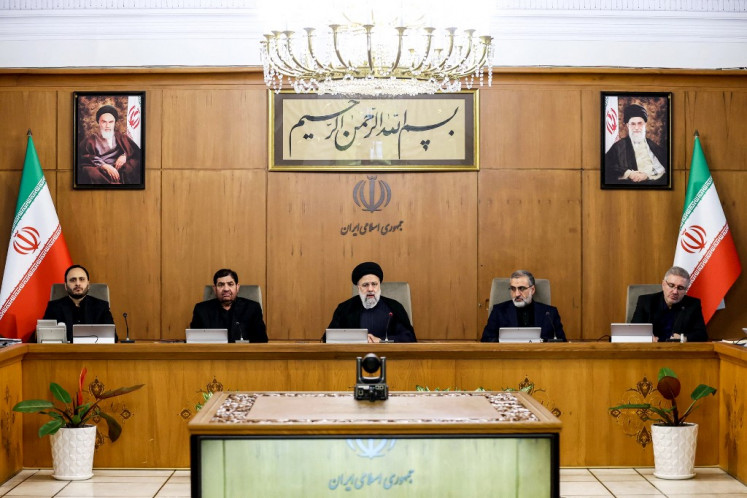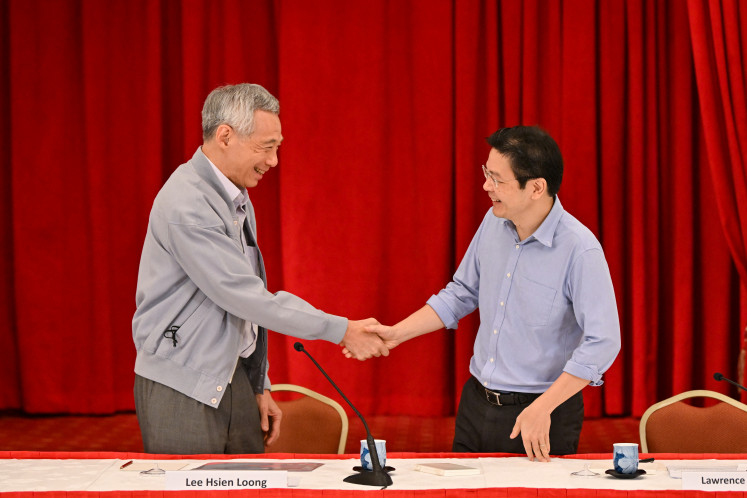Cold lava flows from Mt. Merapi threaten local residents
Aerial shots from an unmanned aerial vehicle (UAV) show that cold lava flows from Mount Merapi continue to threaten residents on the slopes of the volcano, as some 70 million cubic meters of volcanic material from Mt
Change Size

A
erial shots from an unmanned aerial vehicle (UAV) show that cold lava flows from Mount Merapi continue to threaten residents on the slopes of the volcano, as some 70 million cubic meters of volcanic material from Mt. Merapi's major eruption of 2010 remain at the volcano's peak.
Head of the disaster study center at the University of Gadjah Mada (UGM), Djati Mardianto, said that the aerial shots, which were taken on Oct.17, showed that the volcanic material, comprised of volcanic ash and large rocks, was mostly piled up on the south and southeast sections of the volcano.
'From the aerial shots, [it is clear that] the threat of cold lava flows from Mt. Merapi's 2010 eruption is still huge. Of the total 140 million cubic meters of volcanic material from the 2010 eruptions, some 70 million cubic meters remain on the peak of the volcano,' said Djati.
Residents living near the Gendol river, which is located around the southern slopes of Mt. Merapi and which passes through the Cangringan district and areas around Prambanan Temple, would likely suffer the most from flows of cold lava.
Meanwhile, residents living southeast of the summit, including areas near the Woro river that flows to Klaten, Central Java, remain relatively safe from cold lava threats. Areas on the western slopes of the volcano would also remain relatively safe from any cold lava flows.
The UAV shots were jointly conducted by the study center and two other institutions, the National Aeronautics and Space Agency's (LAPAN) aeronautics technology center and UGM's satellite and aeronautics research center.
Head of the aeronautics technology center at LAPAN, Gunawan Setyo Wibowo, said the use of UAVs at Mt. Merapi was a pilot project in disaster mitigation.
'In the future, UAV technology will be critical to disaster mitigation,' he said. (ebf)(++++)









